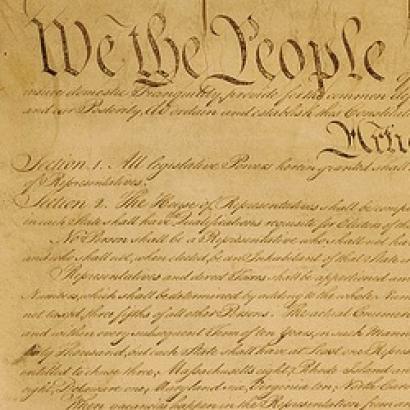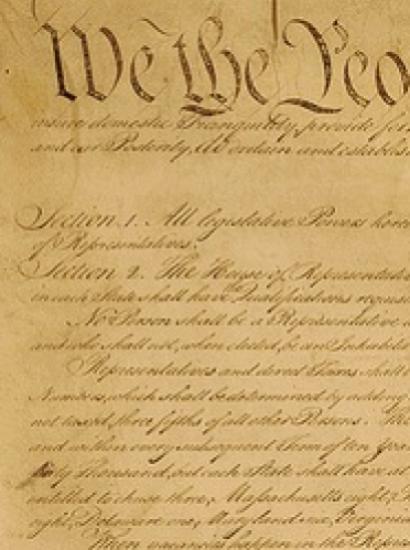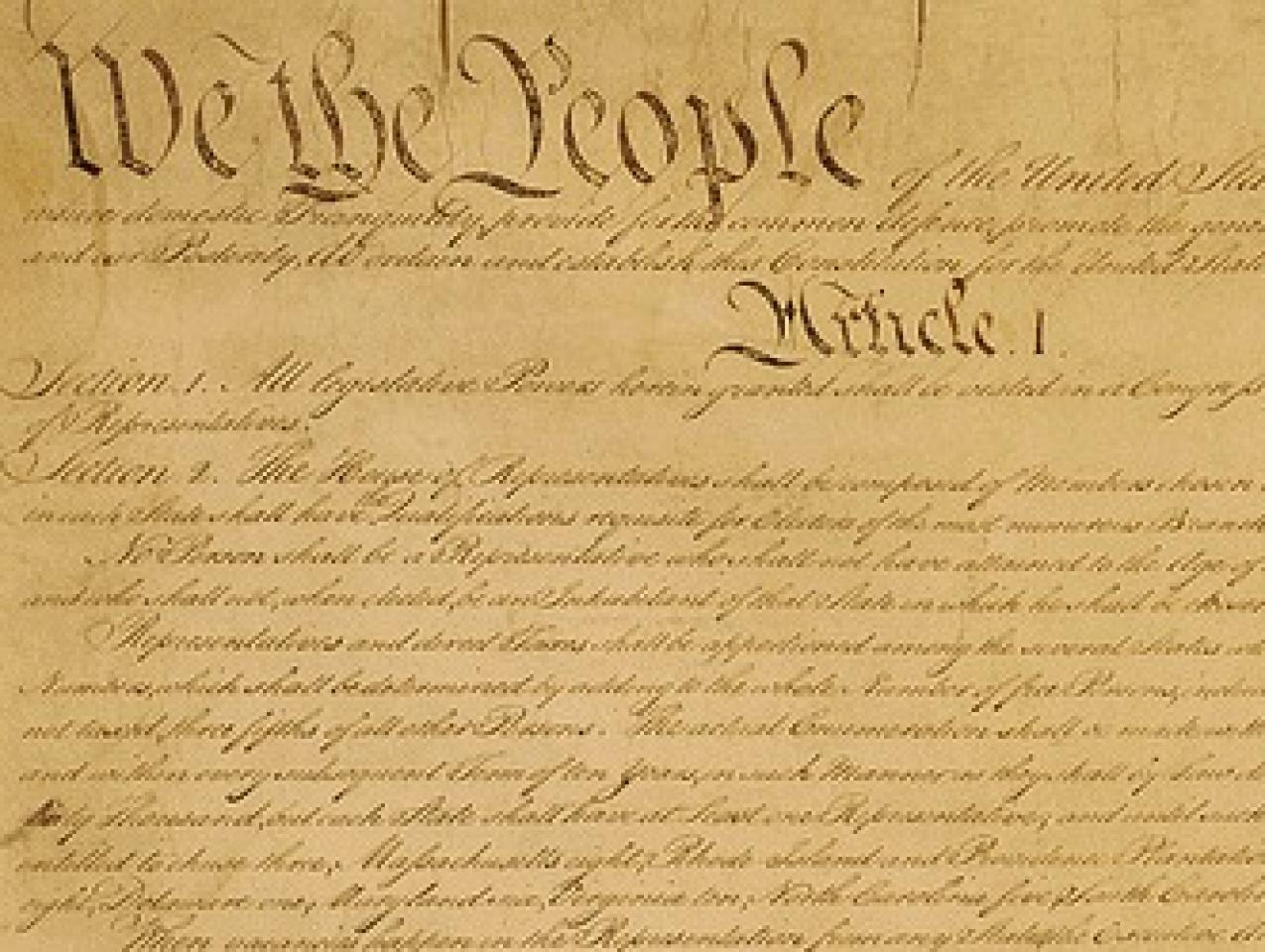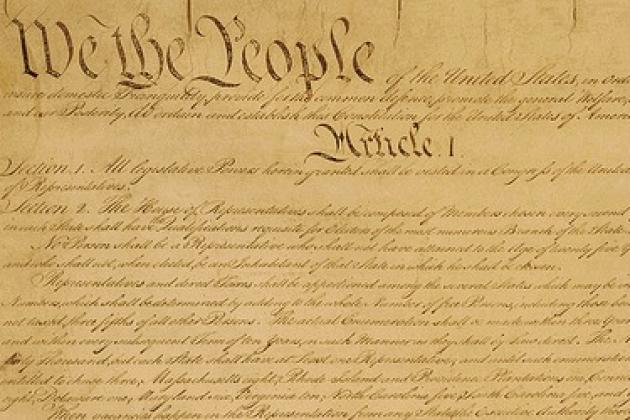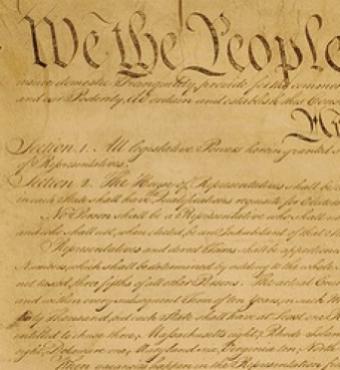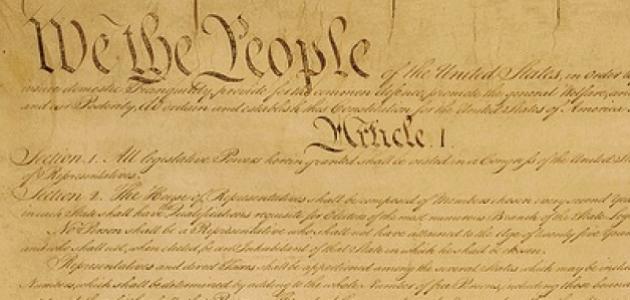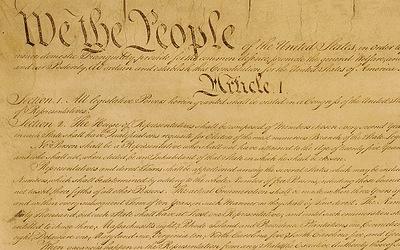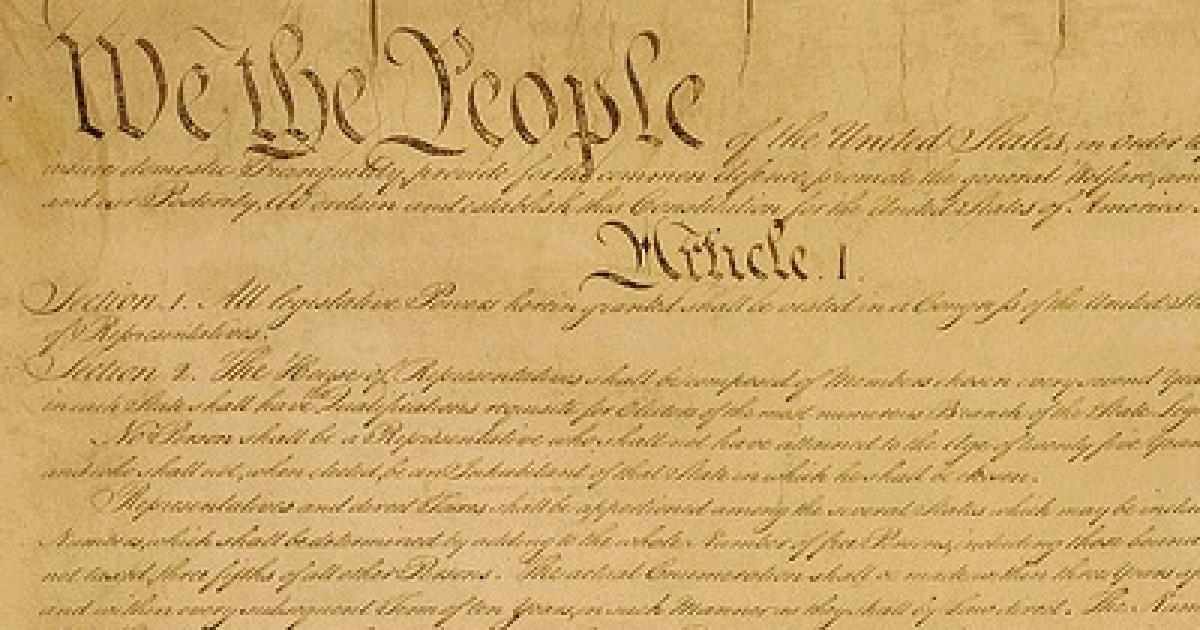- Law & Policy
The U.S. Constitution is, as Justice Ruth Bader Ginsburg has recently reminded us, “a rather old constitution.” In her parlance, old does not mean venerable or worthy of imitation. Speaking on Egypt’s Al Hayat TV, she advised constitution-drafting Egyptians to look to newer models; she singled out the Constitution of South Africa (1996), Canada’s Charter of Rights and Freedoms (1982), and the European Convention on Human Rights (1950).
Admittedly, the oath she swore to “bear true faith and allegiance” to the U.S. Constitution does not require Justice Ginsburg to recommend its adoption by all and sundry. There might be good reasons—rooted in history and circumstance—why a constitution suited to one people is not suited to another. Laws ought to be in accord with the general spirit of a nation, as Montesquieu, the great theorist of modern constitutionalism, argued. This was not the Justice’s point, however. She thinks there are blueprints worthy of export, just not the one ratified by Americans in 1787.
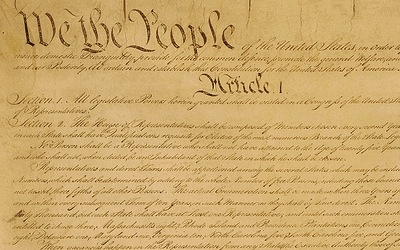
Photo credit: The COM Library
Her opinion is the fashionable one. A forthcoming article in the New York University Law Review confirms the declining influence of the U.S. Constitution. The reason?—“it is increasingly out of sync with an evolving global consensus on issues of human rights,” authors David S. Law and Mila Versteeg argue. This focus on rights (the more, the better) is evident in the documents Ginsburg endorsed. Two of them aren’t even constitutions in the usual sense of a plan of government. Instead, one is a supranational convention about human rights; another is a national charter of rights (added to the Canadian Constitution of 1867 when Canada, in 1982, finally became fully independent of the British Parliament).
The document Ginsburg praised most highly is, at least, a constitution. But the reason the Constitution of South Africa has become the darling of advanced jurisprudential opinion is that it begins with a lengthy enumeration of rights, comprising thirty-two of the document’s 243 sections. By contrast, the U.S. Constitution has a mere seven sections, plus a scanty twenty-seven amendments ratified over the course of 200-plus years (the voluminous South African Constitution has already been amended on average of once a year since its adoption).
Laws ought to be in accord with the general spirit of a nation, as Montesquieu argued.
Of course, we too have something we call a “Bill of Rights,” but this handful of rights was tossed in, an apparent afterthought, at the end of the original document. Moreover, while some of its features are still spoken of favorably (the First Amendment, for instance), other elements look embarrassingly retrograde to the progressive mindset. Case in point: while we secure the right to bear arms, the South Africans secure the “right to have access to adequate housing,” the right to a healthful environment, and the “right to be free from all forms of violence from either public or private sources.”
To be more precise, South Africans don’t actually secure these rights; they proclaim them. How far the proclamation falls short of the practice can be seen in South Africa’s extremely high murder rate (seven times the U.S. rate) and its designation as “the rape capital of the world.” Girls in South Africa are more likely to be assaulted by one or more members of the male population who admit to being rapists—25 percent of men—than they are to learn to read; the majority of rapes are committed against children and even infants.
I mention these horrors not to impugn South Africa in particular, but rather to make a point about all such declarations of rights. They are what James Madison dismissively called “parchment barriers”—nice sounding, but ineffective. Madison knew what he was talking about, since many of the U.S. state constitutions during the founding period were similar to the South African Constitution in that they began with high-flown and lengthy declarations of rights (witness the first thirty articles of the Massachusetts Constitution of 1780).
The South African Constitution contains a startling reinterpretation of "equality."
Another similarity between the South African Constitution and our earliest state constitutions can be found in how they sought to prevent abuses of power. Section 41 of the South African Constitution sets forth “the principles of co-operative government,” according to which state organs may “not assume any power or function except those conferred on them”; they should “not encroach on the geographical, functional, or institutional integrity of government in another sphere”; and finally, they should “co-operate with one another in mutual trust.” The Massachusetts Constitution of 1780 says virtually the same thing, admonishing each department to remain within its prescribed bounds, and instructing the people that they have “a right” to require of their public servants “constant adherence” to the principles of “piety, justice, moderation, temperance, industry, and frugality.”
The leading architect of our federal constitution was not impressed with such flowery sermonizing. The frame of government Madison envisioned was a dynamic system that remained in equilibrium by “so contriving the interior structure of the government, as that its several constituent parts may, by their mutual relations, be the means of keeping each other in their proper places.” Instead of relying on invocations of virtue, the drafters in Philadelphia created a self-correcting mechanism of separated and counter-balanced branches, embodying Montesquieu’s formula: “power must check power by the arrangement of things.”
The Constitution of South Africa does not represent a forward leap in the art of constitution-making. From a Madisonian perspective, it looks more like a throwback to the early state constitutions—constitutions that Madison judged to be incompetent, because they are unable to maintain in practice the principles so finely delineated on paper. To imitate such models, as Justice Ginsburg recommends, would be to forget the hard-won knowledge of the lawgiver’s art, the “new science of politics” inaugurated by Madison and company.
The Federalists held that bills of rights were, in effect, relics of monarchy. They emerged from, and were appropriate to, political orders in which the people had to wrest concessions from kings and nobles. Although they had once served to advance liberty, bills of rights were at odds with the fully realized spirit of self-government. The Constitution itself—an effective government of limited powers instituted by the people—was the surest guarantee of civil liberty.
The first U.S. Supreme Court ruling on free speech didn't occur until 1919.
Thus, Madison would have preferred no bill of rights. When he saw, however, that the demand was irresistible, he prudently took charge of the process to ensure that the opponents of the new Constitution would not amend away the achieved structure. The sampler of select rights that he proposed was designed primarily to do no harm. He suggested these amendments be dispersed inconspicuously throughout the original text rather than collected into an attention-garnering bill of rights. He was adamant against having them inserted at the front of the Constitution, as the Anti-Federalists (following the mode of the state constitutions) wanted. They ended up at the rear—where they remained, until twentieth-century jurisprudence gradually brought the Bill of Rights into greater prominence. (Remember, the first Supreme Court ruling on free speech didn’t occur until 1919).
Herbert Storing, who reviews this history in a wonderful essay entitled “The Constitution and the Bill of Rights” speculates as well on how our constitutional jurisprudence might have developed without those first ten amendments. Perhaps today’s judges, addicted as they are to rights and hankering as they do for fresh infusions of rights, are not properly impartial consultants for the task of constitution-writing. The obsession with rights obscures the Lawgiver’s true aim, which is not to satisfy judicial cravings but to give effect to the people’s need for good government.
There is one final feature of the South African Constitution which may have prompted Justice Ginsburg to sound the vuvuzela trumpets on its behalf: it contains a startling reinterpretation of the meaning of equality. After beginning section 9 by declaring that “everyone is equal before the law,” a qualification is introduced: “To promote the achievement of equality, legislative and other measures designed to protect or advance persons, or categories of persons, disadvantaged by unfair discrimination may be taken.” In other words, it is permissible to reverse the direction of discrimination; the law and the courts can favor the previously disfavored—in the name of ultimate equality (i.e., the equality of result). After stipulating that neither the state nor any person may “unfairly discriminate” against anyone, the section concludes with this Orwellian definition: “Discrimination on one or more of the grounds listed in subsection (3) is unfair unless it is established that the discrimination is fair.” That solves all difficulties, doesn’t it?
As we know, South Africa struggles with the debilitating legacy of apartheid and generations of racist oppression. Is constitutional approval of “bottom rail on top” retribution really the best route to a more just future? Or would a firm commitment to the moral demands of a unitary standard of equal protection promise better? South Africa has made its choice. We’ll see where that takes them in 200 years.
Schaub says Ruth Bader Ginsberg's opinion is the "fashionable one" for those who do not think the American constitution should be the model for modern governments. Schaub's opinion is the fashionable one for conservative legal scholars who, like their counterparts in the political arena, have an imagined view of America's past, who ignore what has been done in the past 200 years in the name of the constitution, and who insist that there is no other "constitution" out there (and there never will be) as good and as exportable abroad as our American constitution.
South Africa's constitution is not perfect, and it's very far from being implemented in practice. And like our constitution, it doesn't always play well in the political arena. But it is not exploited to serve narrow interest groups determined to use the constitution to push their own agenda, and it is not employed as a fundamentalist assault weapon on South Africa's citizenry. South Africa's problems are at a different level than America's, but if you read mainstream South African newspapers like Business Day, the Financial Times, and the Mail and Guardian you will see that the ongoing critique of the powers-that-be is considerably more hard hitting than you will find in America's mainstream press. The problem, of course, is that the people are not listening......yet.
---Les Switzer








